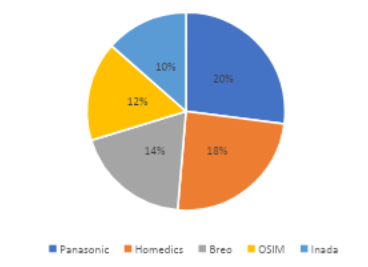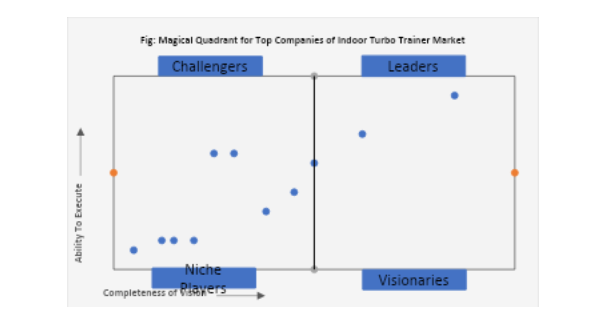Introduction to the Foot Massager Market
The Foot Massager market is experiencing steady growth as consumers increasingly prioritize wellness and relaxation solutions. According to Cognitive Market Research, the market is valued at USD 4,852.9 million in 2024 and is projected to reach USD 7,169.9 million by 2032, expanding at a CAGR of 5.00%. The rising prevalence of lifestyle-related foot ailments, including plantar fasciitis, diabetic neuropathy, and general muscle fatigue, has fueled the demand for foot massagers. Additionally, the increasing awareness of the benefits of foot massage in relieving stress, improving blood circulation, and enhancing overall foot health is driving product adoption. Technological advancements have significantly contributed to market expansion. Innovations such as smart foot massagers with heat therapy, deep kneading, shiatsu techniques, and air compression functionalities are gaining popularity. The integration of AI-driven massage programs, customizable settings, and Bluetooth connectivity has enhanced user experience, making foot massagers a preferred choice for home therapy solutions. Furthermore, the growing adoption of portable and rechargeable foot massagers has expanded consumer accessibility, catering to individuals seeking on-the-go relaxation. The expansion of e-commerce platforms has also played a crucial role in boosting sales, offering consumers a wide range of product options with competitive pricing and home delivery convenience.
Criteria for Comparing Companies in the Foot Massager Market
Cognitive Market Research evaluates companies in the Foot Massager market based on key factors such as market presence, technological innovations, and customer engagement strategies. Revenue and market share serve as primary indicators of a company’s ability to compete in this growing segment. Companies with strong financial performance have the advantage of investing in research and development, ensuring continuous product innovation and differentiation. Leading brands focus on high-quality materials, ergonomic design, and user-friendly interfaces to enhance customer satisfaction and brand loyalty. Innovation is a critical driver of competitive positioning. Companies that integrate advanced massage techniques, heat functions, and AI-powered customization into their products gain a significant edge in the market. Smart foot massagers with voice control, mobile app synchronization, and cloud-based massage programs are transforming the user experience. Additionally, the demand for eco-friendly and sustainable materials in massager production is influencing product development trends, appealing to environmentally conscious consumers.
Geographical reach plays a vital role in determining market leadership. North America and Europe dominate the Foot Massager market, driven by a strong wellness culture, high consumer spending on self-care products, and the widespread adoption of smart home wellness devices. The Asia-Pacific region is emerging as a high-growth area due to increasing disposable income, a growing elderly population, and rising awareness of foot health. Companies with a well-established distribution network across these regions, including online and offline retail channels, can effectively capture market share and drive revenue growth.
Strategic partnerships and brand collaborations contribute to market positioning. Companies that partner with healthcare professionals, wellness centers, and e-commerce platforms gain greater visibility and consumer trust. Collaborations with physiotherapists and podiatrists enhance credibility, positioning foot massagers as therapeutic solutions rather than mere luxury products. Leading players such as HoMedics, OSIM, Breo, Beurer, and Human Touch are at the forefront of market innovation, offering premium foot massagers tailored to diverse consumer needs. As the market evolves, brands that focus on technology-driven enhancements, user convenience, and holistic wellness solutions will shape the future of the Foot Massager market.
Top Companies Operating in the Foot Massager Industry Worldwide
- Panasonic
- Homedics
- Breo
- OSIM
- Inada
- Sharper Image
- Miko
- Naipo
- RENPHO
- Foot Vibe
Top Manufacturing Companies of Foot Massager:
Panasonic, Homedics, Breo, OSIM, and Inada are the key players in the Foot Massager Market
Panasonic
Panasonic dominates the Foot Massager Market with a 20% market share, renowned for its cutting-edge massage technology and premium product range. The company offers a diverse selection of high-performance foot massagers, integrating shiatsu, kneading, and air compression massage techniques to deliver a spa-like relaxation experience. Panasonic's leg and foot massage devices, such as the EW-RA96 and EW-NA75 models, are particularly favored for their ergonomic design, customizable intensity levels, and advanced heat therapy functions.
Homedics
Homedics holds a 18% market share, widely recognized for its affordable yet high-quality foot massagers that cater to the mass-market segment. The brand specializes in compact, user-friendly designs that incorporate features such as deep-kneading shiatsu massage, vibration therapy, and soothing heat functions. Products like the Homedics Shiatsu Air Pro Foot Massager and the Triple Action Shiatsu Foot Massager have gained immense popularity among consumers looking for cost-effective relaxation solutions.
Breo
Breo commands a 14% market share, positioning itself as a premium, technology-driven brand specializing in acupressure and reflexology-based foot massagers. The company is known for integrating traditional Chinese medicine techniques with modern technology, offering massage devices that stimulate pressure points, improve blood circulation, and alleviate muscle tension. Models such as the Breo FootSpa Massager and Breo iSee M Series have gained a loyal customer base among those seeking holistic wellness solutions.
OSIM
OSIM holds a 12% market share, known for its luxury massage products that blend innovation with high-end design. The brand has gained a strong reputation for full-body massage chairs, foot massagers, and relaxation devices, with products like the OSIM uPhoria Warm and uStiletto Leg Massager standing out for their multiple massage modes, heating functions, and air compression therapy. In 2023, OSIM’s revenue from foot massagers exceeded USD 180 million, driven by the growing demand for spa-quality wellness products in homes and workplaces. .
Inada
Inada captures a 10% market share, recognized for its high-end, precision-crafted massage devices. The brand is synonymous with traditional Japanese massage techniques, offering foot massagers that provide deep muscle penetration, reflexology stimulation, and multi-angle compression therapy. Products such as the Inada DreamWave Foot Massager have set industry standards for pain relief, recovery, and full-leg relaxation. In 2023, Inada’s foot massager sales generated approximately USD 150 million, reflecting the brand’s niche positioning in the luxury wellness sector.


Potential Threats to Top Five Players in the Foot Massager Market
CMR found that the foot massager market has witnessed significant growth in recent years, driven by increasing consumer interest in wellness, stress relief, and home-based therapy solutions. Established brands such as HoMedics, OSIM International, Beurer, Human Touch, and Breo have maintained their market dominance through strong brand recognition, advanced product offerings, and extensive distribution networks. However, the growing number of emerging players, including Sharper Image, Miko, Naipo, RENPHO, and Foot Vibe, is intensifying competition and challenging the stronghold of leading manufacturers.
One of the primary threats to top players is the increasing affordability and accessibility of technologically advanced foot massagers. New entrants are leveraging cost-effective production techniques and direct-to-consumer (DTC) e-commerce strategies to offer high-quality alternatives at lower price points. Additionally, the rising consumer preference for smart massagers—equipped with AI-powered intensity adjustments, heat therapy, and personalized massage modes—is enabling newer brands to stand out. Established companies face the challenge of responding swiftly to these innovations while maintaining premium pricing structures. The shift in consumer behavior toward affordable, feature-rich products is placing considerable pressure on traditional industry leaders to continuously evolve their product lines.
Conclusion
Investments in Smart Technology, Design Innovation, and Consumer Engagement Are Vital for Long-Term Success in the Foot Massager Market
The foot massager market is undergoing rapid transformation, fueled by advancements in technology, evolving consumer preferences, and increasing demand for at-home wellness solutions. To stay relevant, both established and emerging players must continuously innovate and adapt to changing trends. Smart technology, such as AI-driven customization, remote-controlled settings, and enhanced therapeutic capabilities, will play a crucial role in shaping the future of foot massagers. Companies that prioritize these innovations will be well-positioned to lead the market.
Furthermore, design innovation and affordability are key drivers of success. New entrants that focus on creating user-friendly, portable, and aesthetically appealing products will attract a wider consumer base. Establishing strong digital marketing strategies, leveraging social proof through influencer partnerships, and ensuring high-quality customer service will also contribute to brand growth and market sustainability. In a competitive industry where technology and consumer experience drive purchasing decisions, long-term success will depend on a brand’s ability to offer value-driven, accessible, and engaging foot massager solutions tailored to modern lifestyles.
Author's Detail:
Kalyani Raje /
LinkedIn
With a work experience of over 10+ years in the market research and strategy development. I have worked with diverse industries, including FMCG, IT, Telecom, Automotive, Electronics and many others. I also work closely with other departments such as sales, product development, and marketing to understand customer needs and preferences, and develop strategies to meet those needs.
I am committed to staying ahead in the rapidly evolving field of research and analysis. This involves regularly attending conferences, participating in webinars, and pursuing additional certifications to enhance my skill set. I played a crucial role in conducting market research and competitive analysis. I have a proven track record of distilling complex datasets into clear, concise reports that have guided key business initiatives. Collaborating closely with multidisciplinary teams, I contributed to the development of innovative solutions grounded in thorough research and analysis.
